
Our history
DEUTZ
Associated with
many great names
DEUTZ’s corporate history - associated with many great names. Our people are the engine of our company’s success. This goes for our entire team, and the many personalities whose names stand for drive systems, technology, and progress to this day: striking heads of engine history.
Striking Heads
1832 – 1891
Originally trained as a merchant, Nicolaus August Otto worked as a travelling salesman in Cologne from 1853, but soon became involved in internal combustion engine technology. In 1862 he began experimenting with a four-stroke engine of his own design, but it was not as successful as he had hoped due to the explosive nature of the fuel combustion. Otto met the Cologne engineer and sugar manufacturer Eugen Langen. He gave up his job as a travelling salesman and in 1864, together with Eugen Langen, founded N. A. Otto & Cie in Cologne, the world's first factory dedicated solely to the production of internal combustion engines and the forerunner of today's DEUTZ AG. An atmospheric gas engine developed by Otto and Langen was awarded a gold medal at the 1867 World Exhibition in Paris as the most economical drive engine for small trades. In 1876, Otto's four-stroke engine was the world's first internal combustion engine with the greatest potential for development for all types of fuel and all applications. In 1882 he received a great honour: the Faculty of Philosophy at the University of Würzburg awarded him an honorary doctorate, Doctor Philosophiae honoris causa, together with Alexander Graham Bell, the inventor of the telephone.
Otto completed his work on the internal combustion engine with the invention of magnetic low-voltage ignition, a prerequisite for making an internal combustion engine independent of the mains gas supply. He died in Cologne on 26 January 1891, aged just 59. To this day, a tombstone in Cologne's Melaten cemetery commemorates the inventor of the four-stroke cycle.
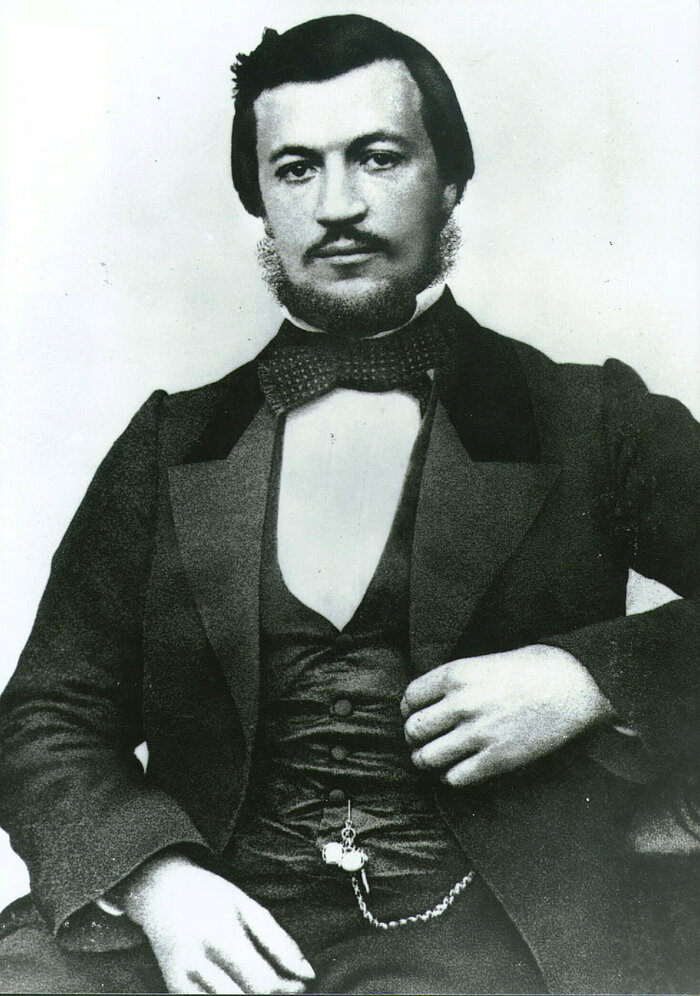
As part of the celebrations to mark 100 years of motoring in the USA, Otto was inducted into the Automotive Hall of Fame in Detroit, along with Wilhelm Maybach. He thus joins the ranks of those who have received the highest recognition worldwide for their services to the automotive industry. As a further honour, he was inducted into the European Automotive Hall of Fame in Geneva on 5 March 2002.
1833 – 1895
Born in Cologne on 9 October 1833, Eugen Langen studied engineering, mechanics and chemistry at the Polytechnic in Karlsruhe from 1850. In 1858 he became a partner in his father's sugar factory in Cologne. His first notable invention was a high-level grid to make more economical use of brown coal (lignite) for power generation. This was followed by a new system for regenerating animal charcoal, which was used as an aid in the purification of molasses in sugar production.
In 1870, together with a group of friends, he founded the company Pfeifer & Langen, which opened its first factory in Elsdorf, near Cologne. He soon gained a worldwide reputation as the great technical reformer of the sugar industry; his method of refining sugar in a centrifuge and then processing it into cubes came to replace the old purification method, which resulted in a sugar loaf. His invention of an overhead track for hoists in the factory to transport sugar and other ingredients became the prototype on which the Wuppertal suspension railway was built. He also played a major role in the development of German patent law. He often played a helpful and decisive role in the establishment of new companies and banks and in the restructuring of existing ones.
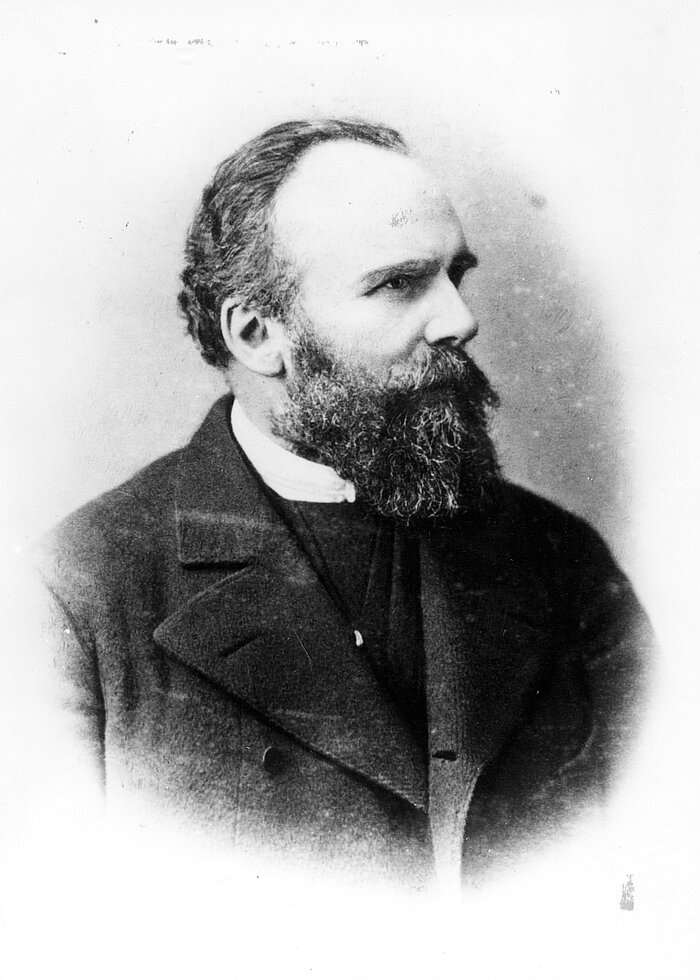
Another great success was his collaboration with a businessman called Nicolaus August Otto. In 1863 they founded the company N. A. Otto & Cie in Cologne, the world's first engine factory and the origin of today's DEUTZ AG. It was thanks to Eugen Langen that Nicolaus August Otto was able to work in peace on the development of his four-stroke engine, which in 1876 in Cologne gave birth to the motorisation of the whole world. Eugen Langen died on 2 October 1895 at his country estate, Haus Etzweiler, near Elsdorf, and was buried in the family crypt at Melaten Cemetery in Cologne.
1834 – 1900
Born on 17 March 1834 in Schorndorf, near Stuttgart, Gottlieb Daimler attended the local school and was first apprenticed to a gunsmith in his home town. He then completed a four-year apprenticeship at the Elsässer Maschinenfabrik and a two-year course at the Polytechnische Hochschule in Stuttgart. At the age of 27, he decided to perfect his knowledge and skills by travelling abroad: to Paris, Leeds, Manchester and Coventry. On his return, his career took him to Geislingen and Reutlingen, also in the Stuttgart area, and then to an engineering company in Karlsruhe. On 10 March 1872, he came to Cologne to work for Gasmotoren-Fabrik DEUTZ AG. As technical director, he was responsible for the workshops and the drawing office, as well as for materials and personnel management. One of his first personnel decisions was to appoint his friend Wilhelm Maybach as head of the drawing office. In the almost ten years that he worked for DEUTZ, his influence on the company's burgeoning development was considerable. He built the new factory on the right bank of the Rhine and set up the series production of both the atmospheric engine and, later, the Otto four-stroke engine.
The good financial results achieved by DEUTZ were largely due to this faultless and efficient production. At the end of 1881, both he and Wilhelm Maybach left DEUTZ. The exclusive production of engines for stationary use was no longer compatible with Daimler's ideas for a smaller engine that could also power vehicles. In 1882 the two men set up their own workshop in Bad Cannstatt, on the outskirts of Stuttgart, and from then on concentrated on developing a small, fast-running petrol engine.
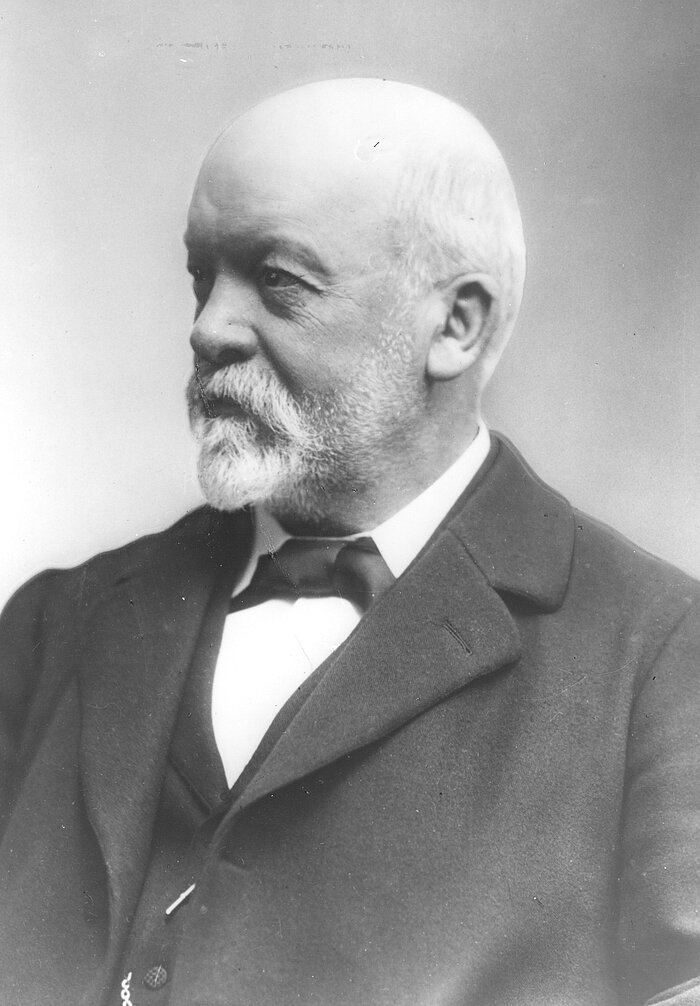
Gottlieb Daimler died on 6 March 1900 surrounded by his family.
1846 – 1929
Wilhelm Maybach was born in Heilbronn on 9 February 1846, the son of a master cabinetmaker. His parents died when he was young. He was sent to a charitable home in Reutlingen, near Stuttgart, where young people without means were given a basic education. During his apprenticeship as an engineer, he showed an unusual talent for science. He became a draughtsman in the engineering factory attached to the charitable home, which was taken over by Gottfried Daimler in 1867. He remained at Daimler's side for many years as his closest assistant, and in 1872 the same Gottlieb Daimler called him to Cologne to take up the position of head of the drawing office at the DEUTZ AG gas engine factory. In the years that followed, Maybach not only brought Otto and Langen's atmospheric gas engines to series production, but also the four-stroke engine that Otto had invented.
When Daimler left Cologne in 1882, Maybach went with him to Cannstatt on the outskirts of Stuttgart. He was the designer behind the development of motor vehicles, from the first motor bicycle in 1885 and the "Reitwagen" to the first Daimler motor car in 1886 and the first "Mercedes" (named after Maybach's daughter) in 1901.
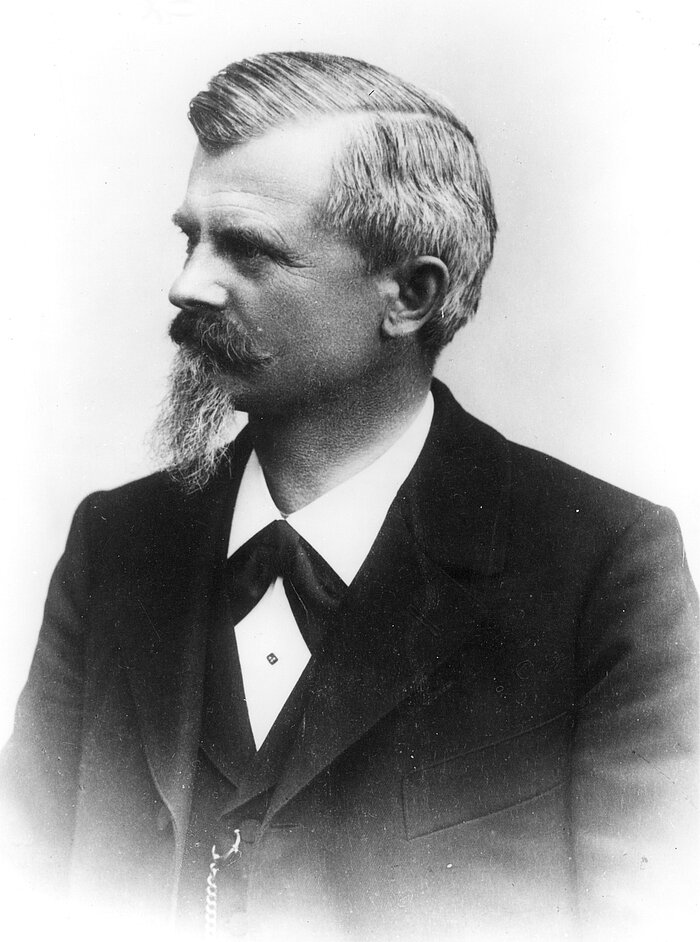
In 1907 he left the Daimler Motor Company and two years later, together with his son, founded Maybach-Motorenbau GmbH in Friedrichshafen, at the eastern end of Lake Constance. His great work in the development of engines and motor vehicles was widely recognised, and he was awarded medals, titles and an honorary doctorate from the Stuttgart University of Applied Sciences. In 1922 the VDI (Verein Deutscher Ingenieure) awarded him its highest honour, the Grashof Memorial Medal.
Wilhelm Maybach died in 1929 at the age of 84.
1858 – 1913
Rudolf Diesel was born in Paris on 18 March 1858 to German parents. When the Franco-Prussian War broke out in 1870, his parents left Paris and moved to London, but sent their son Rudolf to Augsburg to study at the College of Trade and Industry. From 1875 to 1880 he studied at the Polytechnic in Munich, where one of his teachers was Carl Linde, whose lectures inspired him to study the problems of heat engines in particular. On 27 March 1892, Diesel filed a patent for a "method of operation and construction for internal combustion engines", which formed the basis of what he would later call the "self-igniting internal combustion engine". Only a month later he submitted a written offer to Gasmotoren-Fabrik DEUTZ AG (GFD) in Cologne to take over his idea, but Eugen Langen rejected it. In 1893 he was granted this patent under no. DRP 67207. After a discussion in Berlin with Eugen Langen also failed to produce an agreement, the invention was licensed to Maschinenfabrik Augsburg (now MAN), Krupp and the Sulzer brothers.
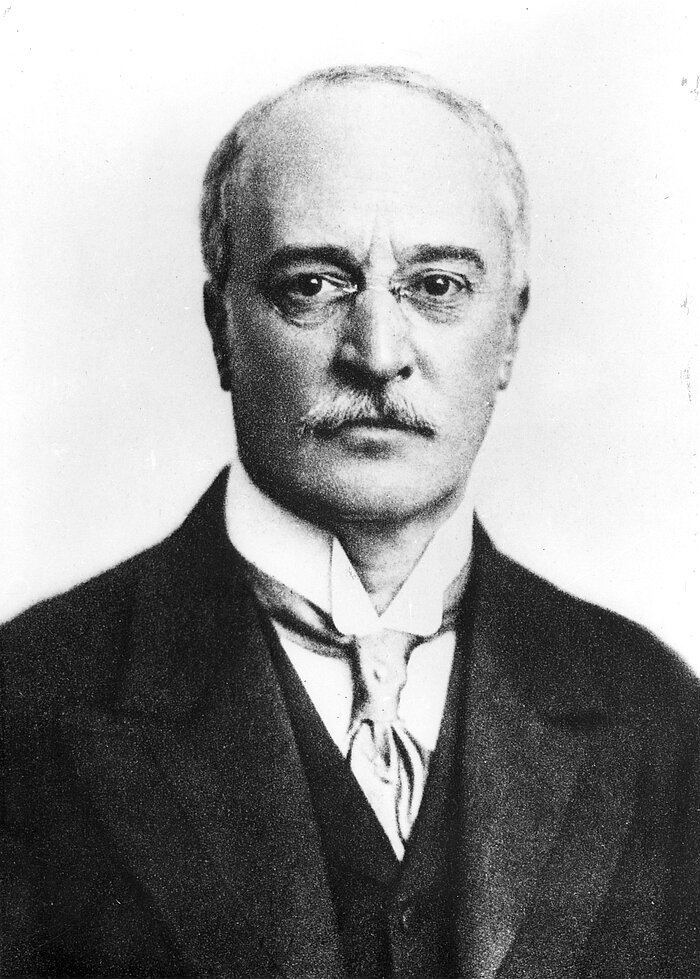
In 1897, Maschinenfabrik Augsburg finally succeeded in building the first working diesel engine. Its efficiency was 26.6 per cent! This prototype engine can now be seen in the Deutsches Museum in Munich. The first practical diesel engine was delivered in 1898, and in the same year GFD succeeded in producing the first diesel engine without a crosshead. Diesel's patent expired in 1907, after which GFD began mass production of diesel engines up to 400 hp.
Rudolf Diesel lived to see factories and power stations switch from steam to diesel engines, the first diesel locomotives run on the railways, and large passenger liners equipped with diesel engines. In 1913, at the early age of 55, he lost his life in a tragic fall from a ship crossing the English Channel between Antwerp and England.
1861 – 1942
Robert Bosch was born on 23 September 1861 as the eleventh of twelve children in Albeck, near Ulm, and attended school there from 1869 to 1876. He then completed a three-year apprenticeship as a precision mechanic and in 1879 became a journeyman, travelling from place to place to gain more experience. Cologne, Stuttgart, New York and London were just some of the stops on his educational journey. Returning to Germany in 1886, he opened a workshop for precision and electrical engineering, where in 1897 he built a magnetic ignition device very similar to one developed, but not patented, by the Cologne company Gasmotoren-Fabrik DEUTZ AG. He recorded this in his memoirs: "At that time, in the summer of 1897, the owner of a small machine shop came to me and asked if I could make for him a device like that used by Gasmotoren-Fabrik DEUTZ AG in its petrol engines. He told me that such a device could be seen in Schorndorf. I went there and found a low voltage magnetic device with a tear-off attachment. I made some enquiries with DEUTZ as to whether this device might have been patented. Nowhere else did I find any indication that the device might be patented, so I made one myself...".
This copy of a magnetic ignition device from Gasmotoren-Fabrik DEUTZ AG may well have been one of the most important cornerstones of today's Bosch electrical and electronics group.
Robert Bosch died on 12 March 1942 at the age of 80.
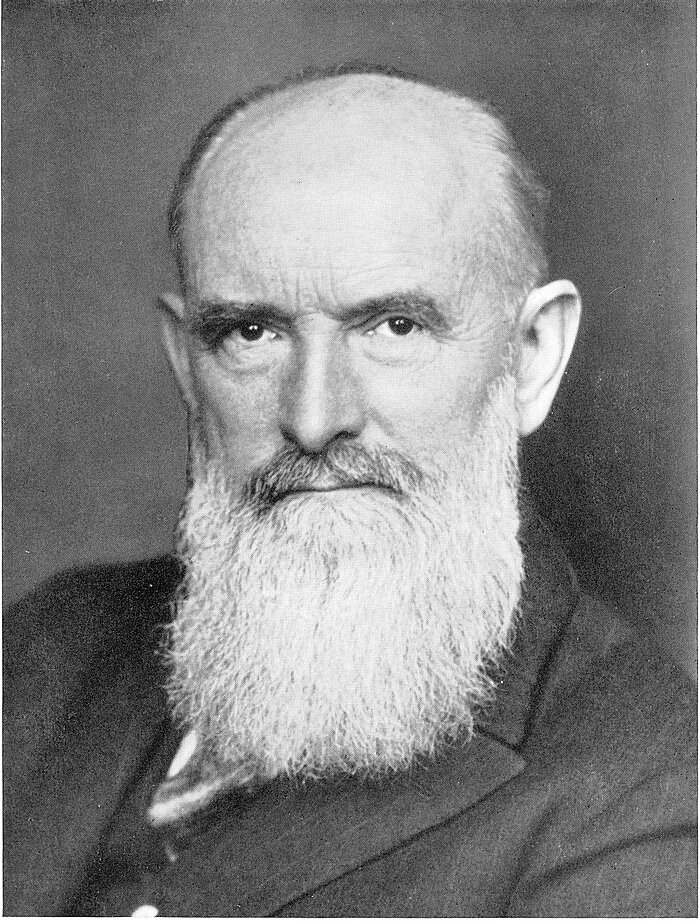
1876 – 1939
Born in Beirut on 1 February 1876, L'Orange came from a Huguenot family in the south of France.He came to Germany at the age of 12. In 1900 he graduated from the Technical University of Charlottenburg, where he worked as an assistant in the thermal laboratory. After military service and a short stint in Ilsenburg in the Harz mountains, his technical career began in 1904 when he became a test engineer for large gas engines at Gasmotoren-Fabrik DEUTZ AG (GFD) in Cologne.
In 1908 he succeeded in designing an engine with a split combustion chamber, the basic idea behind the later diesel engine without a compressor. This led to patent no. DRP 238 832, filed on 22 July 1908, granted on 3 October 1911 - but GFD never made use of it.
On 1 October 1908, L'Orange became chief engineer at Benz & Co, Rheinische Gasmotorenfabrik in Mannheim, and was appointed to the board of directors in 1912. After a short period of war service, he was recalled to the company to develop submarine engines in particular. Drawing on the experience he had gained in Cologne, he developed the precombustion chamber, the final breakthrough in the development of the compressorless diesel engine.
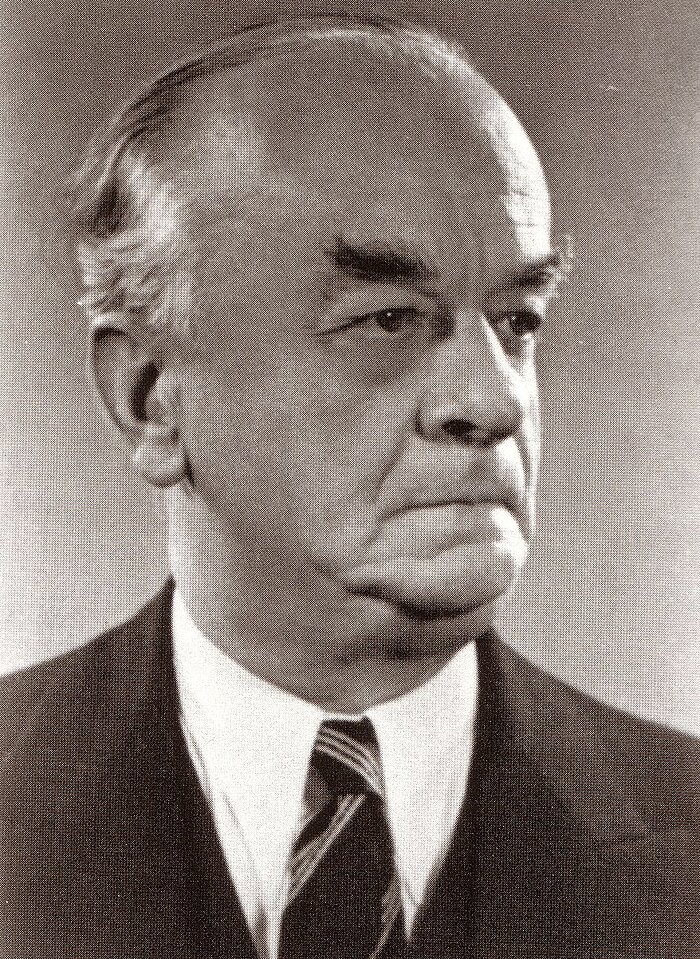
In 1922 the company was split into Motoren-Werke Mannheim AG (MWM), formerly Benz Stationärer Motorenbau, and Benz & Cie, Rheinische Automobil- und Motorenfabrik AG, and he became managing director of MWM. In 1926, he left this company and went into business for himself with research and design work.
In 1932, together with his sons Harro and Rudolf, he founded the company "Gebrüder L'Orange Motorzubehör", which specialised in the development and production of fuel injection systems. On 11 January 1939, L'Orange was awarded an honorary doctorate by the Technical Academy, but died shortly afterwards, on 30 July 1939, in Stuttgart.
The company remained in family ownership until 1978, when it became part of the ITT Group for seven years, before being taken over by MTU in 1985. Today, L'Orange GmbH is a wholly-owned subsidiary of MTU in Friedrichshafen and thus part of the DaimlerChrysler Group.
1881 – 1946
It all began at Gasmotoren-Fabrik DEUTZ AG in the Deutz district of Cologne, now known as DEUTZ AG, with the four-stroke engine developed by Nicolaus August Otto in 1876, which became the basis for later vehicle engines. In 1886, Carl Benz and Gottlieb Daimler presented the first vehicles powered by internal combustion engines. By 1906, around 3,500 cars had been produced in Germany, but German manufacturers were unable to meet domestic demand.
This prompted Gasmotoren-Fabrik DEUTZ AG to analyse the automotive market in 1907. The hope of finding sufficient sales, especially in the domestic market, was well-founded, and the opportunity was seized to recruit a promising design engineer, who even brought the complete plans for a vehicle with him: Ettore Bugatti. Born in Milan on 15 September 1881, Bugatti initially worked in his home town before moving to Alsace (then part of the German Empire) to work for Baron de Diederich's Grafenstaden machine factory.

However, the situation he found there did not seem to offer him any great prospects, so he decided to accept a position with Gasmotoren-Fabrik DEUTZ AG in what was then called Cöln-Deutz, as the financial conditions must have seemed very tempting. Bugatti's research appears to have been highly favourable, and a contract was signed on 1 September 1907. The four-cylinder in-line four-stroke engine designed by Bugatti, with its overhead camshaft driven by a king shaft and suspended valves, was far ahead of its time. Vehicles with chain and shaft drive were to be built at the Berlin branch of Gasmotoren-Fabrik DEUTZ AG.
Coordination problems between Bugatti and the company's management, as well as problems with the economic production of the vehicles, led to the termination of the contract with Bugatti in 1909, although it had originally been agreed to run for five years. Production ceased after only about 50 of the cars had been built. The production of cars at DEUTZ was thus destined to be nothing more than a brief episode in its history. Ettore Bugatti settled in Molsheim. The oval logo previously used for the cars produced in Cologne-Deutz, with the DEUTZ lettering, now bore the name BUGATTI.
Ettore Bugatti died on 21 August 1947 in France.

Milestones
We keep the world moving – since 1864.
The world’s first engine factory was established that year under the name of N. A. Otto & Cie. DEUTZ boasts a history of many highlights: from the invention of the Otto engine to DEUTZ’s first hydrogen engine, the TCG 7.8 H2.